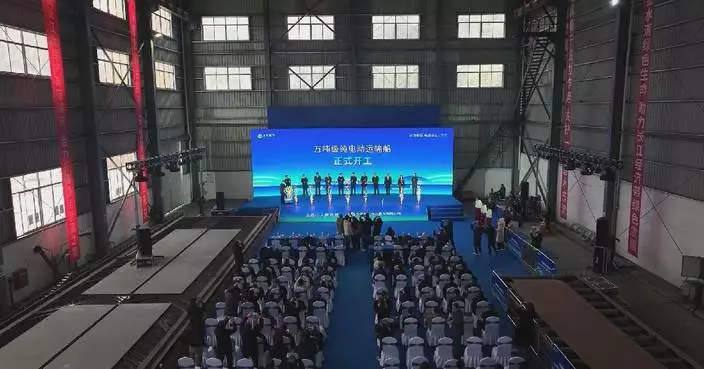The red mudflats, green reeds and winding blue rivers together form what resembles a beautiful colorful oil painting in the Liaohekou National Nature Reserve in Panjin, northeast China’s Liaoning Province, attracting tourists from across the country.
The nature reserve covers a total area of 800 square kilometers. In the golden September, the endless tidal flats are covered with a red carpet because of the maturity of Suaeda salsa. The geographical environment where the river and the sea meet makes the bright red tidal flats and creates a reed marsh with intact vegetation types. It is home to 494 species of wild animals and is an important stopover and breeding ground for more than 200 migratory birds such as the red-crowned crane.
In recent years, local authorities have enhanced efforts in the comprehensive improvement and ecological protection of the Liaohe River Basin, and actively organized and implemented a Suaeda salsa restoration project. Today, the green reeds and red tidal flats are expanding rapidly, with schools of fish and birds living and feeding in the national-level nature reserve.

Red mudflats, blue rivers form facisnating autumn scenery in northeast China's Liaoning
China in 2024 saw a faster transformation and upgrading of investment in manufacturing industry, a strong growth of investment in high-tech industries, and a rebound of investment in infrastructure construction, according to the latest data released by the National Bureau of Statistics on Saturday.
The investment in manufacturing industry grew by 9.2 percent compared to the previous year, or six percentage points higher than the growth rate of overall investment. In particular, investment in technological upgrades of manufacturing industry increased by eight percent, or 4.8 percentage points higher than overall investment growth.
Private investment in manufacturing grew by 10.8 percent, driving up overall private investment by 5.3 percentage points.
The structure of investment continued to optimize. Investment in high-tech industries rose eight percent compared to the previous year, which was 4.8 percentage points higher than the growth rate of overall investment. In particular, investment in high-tech manufacturing grew by seven percent, and that in high-tech service industry grew by 10.2 percent. Investments related to high-tech industries, such as aerospace equipment manufacturing and professional technical services, increased by more than 30 percent.
In 2025, China plans to moderately increase central government budgetary investments, issue ultra-long-term special treasury bonds and local government special bonds, and enhance efforts to support projects for implementing major national strategies and building security capacity in key areas, as well as implementation of large-scale equipment upgrades and consumer goods trade-in programs, with the aim of stimulating private investment activity through various measures, effectively leveraging government investment to drive social investment, improving investment efficiency, and promoting steady growth in investments.

Transformation, upgrading of China's manufacturing investment accelerates in 2024























































